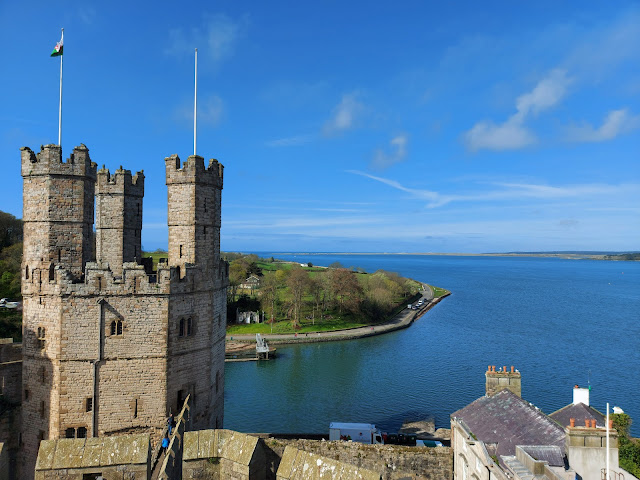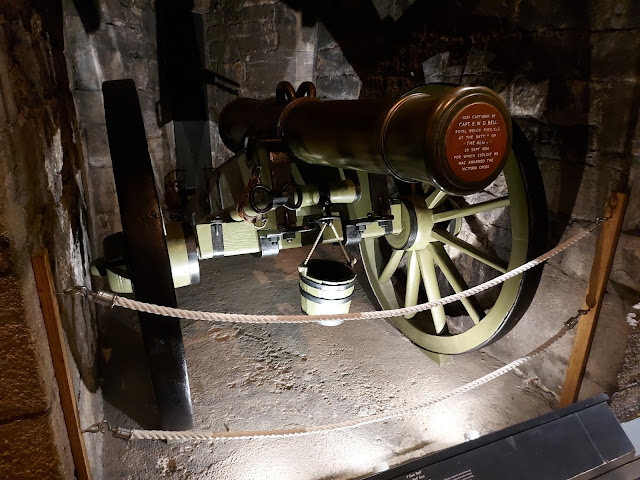 |
| Caernarfon is the cultural capital of Wales and the city in which you are most likely to hear Welsh in Wales. |
 |
| The Welsh pie is massive at the inn. We met some nice Welsh locals there, one of whom's favorite movie is Deliverance. Hopefully that's not what most Welsh think the U.S. is like... |
 |
| Caernarfon is also surrounded by walls, with an Anglican church built into one. |
 |
| Caernarfon Castle is the main attraction in town. |
 |
| The area was originally home to the Ordovices, a Celtic tribe. Romans subjugated the area around 80 A.D. and built a fort called Segontium to consolidate control there. |
 |
| From the 4th to 11th century Caernarfon was part of the Kingdom of Gwynedd after the fall of Roman Britain. |
 |
| The castle is strategic because it dominates the Menai Strait between mainland Wales and the Isle of Anglesey. |
 |
| After Llwelyn ap Gruffudd, the last native Prince of Wales, refused to pay homage to Edward I, the English conquered Gwynedd and constructed Caernarfon Castle. |
 |
| Henry VII's grandfather was a Welsh nobleman, so when the House of Tudor ascended to the English throne, Welsh rebellious tendencies died down and the castle fell into disuse. |
 |
| The castle is now used to invest the Prince of Wales. |
 |
| David Lloyd George was a MP for Caernarfon boroughs. His parents moved to Manchester for work, but he was raised with a Welsh identity and spoke Welsh. |
 |
| One exhibit in the castle was about getting into the mind of Edward I (literally). |
 |
| Another was about Eleanor of Castle, Edward's wife, who gave birth at Caernarfon Castle. |
 |
| A Game of... Crowns. |
 |
| The Museum of the Royal Welsh Fusiliers is also in the castle. |
 |
| The Fusiliers fought at the Battle of Bunker Hill. This sketch is by Lieutenant from the unit, drawn in 1775. |
 |
| The French Eagle surrendered to the Fusiliers when the British captured Martinique in 1809 |
 |
| The Bell Gun, a Russian field gun captured during the Crimean War. |
 |
| Weapons captured during the Boxer Rebellion |




No comments:
Post a Comment